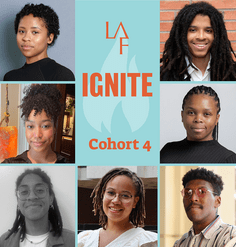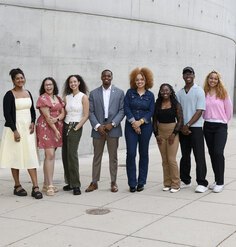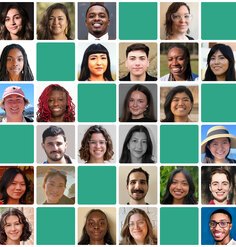Olmsted Scholar Feature: Transgressing the Grid
By Alison Hirsch, 2011 National Olmsted Scholar Finalist
This past fall, my partner, Aroussiak Gabrielian, and I submitted a proposal to The Greatest Grid: A Call for Ideas, a design competition recognizing the 200-year anniversary of the 1811 Commissioners’ Plan for New York. The competition announcement requested we “propose new ways for thinking about how the street grid shapes life in New York.”
We proposed that the future of Manhattan’s street grid lies in the opportunities created by its famous “rogue street” — Broadway. Only by the grid’s relentless uniformity can we appreciate its rare discontinuities and only through the idiosyncrasies created by Broadway does the true nature of the grid become visible to the inhabitants on the street. Through the aesthetic practice of walking, the dying medium through which the city was once perceived and enjoyed, we investigated the symbiosis that exists between the grid and that resilient street which pre-dated and transgressed it.
Rather than a bombastic physical restructuring, we suggested a reframing of perspective to project the city into the future. Through the following four operations, we highlighted the thrill of the obedient grid through a walk down the island’s subversive street.
DATUM_ecology
Broadway is the grid’s backbone or datum. We exaggerated this condition by representing it as a straight line, which transformed the grid from its unforgiving rigidity to a system of shifting geographies. By straightening Broadway, the plan accentuates its adjacency to the river in the north and its tightly landlocked condition in the south. In the north, we strengthened the exchange between Broadway at the crest of the rise and the river at its base through a physical weaving of ecologies from each system. Because lower Broadway is deep in the interior of the island, awareness of the city’s geography and ecology diminishes. We thus constructed an “edge ecology” along Broadway — a vegetated catchment and filtration system, which conforms to the logic of the city.
METER_program
Although the grid offers a reliable metric to our peripatetic experience, New Yorkers have become habituated to its predictable structure. Broadway increases duration. Around the street’s bends, the rhythm shifts, stretching time. When Broadway is straightened and its angular relationship to its cross-streets remains the same, the grid ceases to be a grid and, instead, becomes a complex web of overlapping relationships. By identifying the “nodes” of these intersections, a new urban network emerges. We ensured that each node was identifiable by one of three surface deployments, which catalyze performance appropriation. Public performance triggers material performance by means of piezoelectric technology that translates vibration into energy to feed into the local supply.
HORIZON_topography
Through a 360-degree photographic sequence taken each time the grid crosses Broadway, we stretched Broadway’s horizon, unrolling it into a gridded field (detail pictured). When Broadway transforms from a line to a field, we emphasize its position as a place rather than a means to get from one point to another. The relentless linear perspective of the grid plan makes the walk down other avenues a redundant pinching of the horizon. Because of Broadway’s transgressive nature, the walker experiences a multiplicity of unpredicted perspectives and varied relationships to the sky.
The horizon orients the body in relation to a greater territory. New Yorkers have a unique relationship to the horizon. They experience it either as a horizontal expanse at the rivers’ edges or it is obscured within a vertical shaft between buildings. We suggested a breakdown of this dichotomy through elevation shifts that diversify the body’s relationship with the ground and sky. By physically lifting the body off the ground in a topographic infrastructure along Broadway, the horizon rhythmically expands and contracts.
DEPTH_infrastructure
Despite the leveling of Manhattan while implementing the grid plan, Broadway retains a sectional thickness. Its topographic variety in the north and south is enhanced by its subgrade network of subways and aqueducts, which represent unexplored opportunities for new forms of appropriating and enjoying the city. From an elevated position, the grid is comprehensible; from the ground, it is understood; but the transgressive spaces below the city offer the ultimate opportunity to get lost.
Alison B. Hirsch has an MLA, an MS in Historic Preservation and a Ph.D. in Architecture and she is currently teaching in the Landscape Architecture department of the University of Virginia. Her book, City Choreographer: Lawrence Halprin & Public Performance in Urban Renewal America will be published by University of Minnesota Press by the end of 2012.










